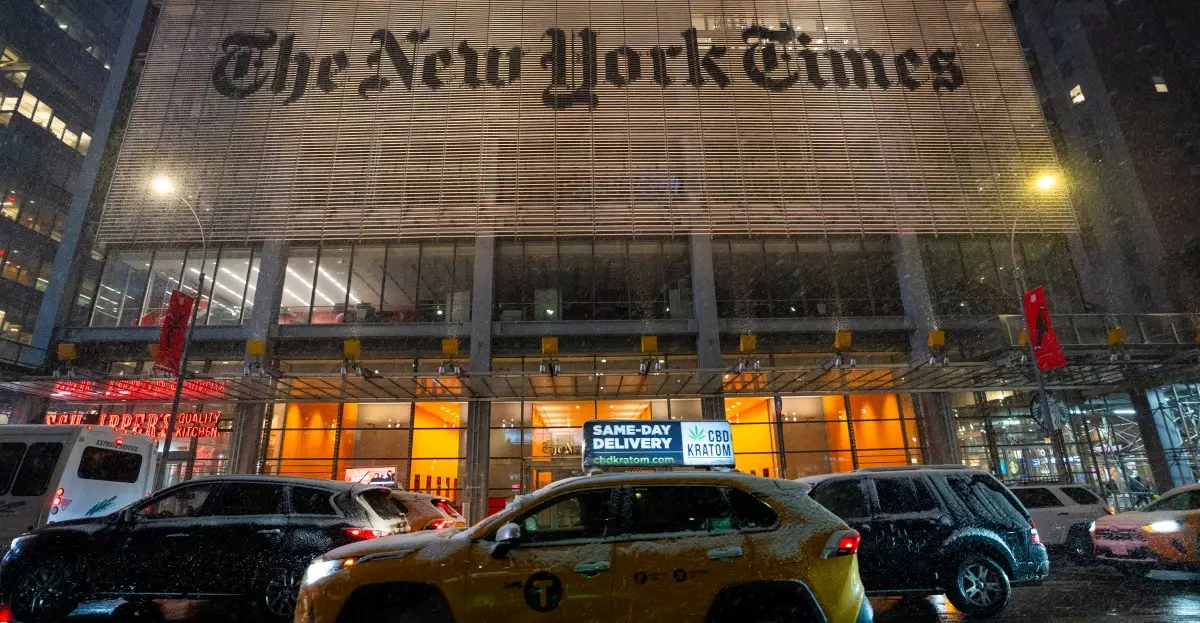As the world increasingly embraces technological advancements, the journalistic landscape finds itself at a crossroads. The New York Times is one of the leading publications that has begun to incorporate artificial intelligence (AI) within its editorial processes. With the integration of AI tools aimed at enhancing productivity and creativity, the question arises: Can we maintain the integrity of journalism while leveraging these new technologies? This article explores how AI is currently being utilized by The New York Times and the implications it brings to the newsroom.
Reports indicate that The New York Times has initiated training programs for its editorial and product staff, equipping them to effectively use AI in their daily tasks. This approach marks a significant shift in newsroom culture, as journalists are now encouraged to rely on AI for various functions—from editing to crafting headlines, and even generating questions for interviews. This innovative use of AI, while potentially enhancing efficiency, raises concerns regarding originality, authorship, and accountability in reporting.
The introduction of Echo, a proprietary AI tool designed to summarize articles and company activities, illustrates the publication’s commitment to integrating machine learning technologies into its workflow. By enabling journalists to harness AI for mundane tasks, The New York Times aims to free them up to engage in deeper investigative work—an essential component of quality journalism. However, the danger lies in the fine line between assistance and reliance. As AI tools become increasingly capable, there is a risk that the human touch, which is fundamental to storytelling, may be diminished.
Understanding the potential drawbacks of employing AI, The New York Times has established a series of strict guidelines governing how these technologies can and cannot be used. Journalists are explicitly forbidden from allowing AI to draft or make substantial modifications to articles, circumvent paywalls, or utilize third-party copyrighted material without consent. This is a crucial step towards maintaining the integrity of the publication’s content, emphasizing that AI serves merely as an assistant rather than a creator.
In a memo outlining the principles of generative AI pertinent to newsroom operations, The New York Times reaffirmed that journalism will remain the responsibility of its expert team. The publication insists that any material generated with AI input must undergo rigorous vetting by human editors to ensure that the information presented is accurate and reliable. This insistence on oversight serves as a reminder that while AI may facilitate certain aspects of the journalistic process, it cannot substitute for the human intelligence and ethical considerations that underpin responsible reporting.
The New York Times is not alone in its experimentation with AI. Numerous publications have adopted various AI applications, ranging from simple grammar checkers to advanced tools for generating full-length articles. However, each newsroom must navigate the delicate balance between embracing technological advancements and upholding journalistic standards. The ongoing legal disputes between The Times and major AI firms like OpenAI and Microsoft, over unauthorized usage of content for AI training, underscores the ethical quandary surrounding AI in journalism.
As technology continues to evolve, journalism must adapt to remain relevant. However, the fundamental principles of truth, accuracy, and accountability must remain steadfast. The reliance on AI could lead to significant shifts in how stories are reported and presented, as well as impacts on employment within the industry.
The integration of AI in journalism, as demonstrated by The New York Times, is an evolving narrative that promises both opportunities and challenges. The potential for improved efficiency and enhanced storytelling is undeniable; nevertheless, it is critical that the human element in journalism is not overshadowed by technological innovations. Editorial teams must continue to prioritize accountability, oversight, and ethical practices as they navigate the future landscape of reporting.
In this new era, the role of journalists must adapt to incorporate these tools while ensuring the integrity and authenticity that readers expect. As we move forward, the ability to harmonize human creativity and technological prowess may define the future of journalism, echoing the timeless sentiment that while machines can assist, it is the journalists who ultimately tell the story.

